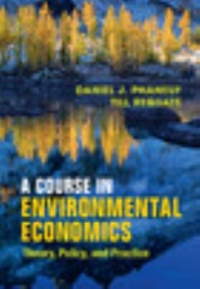Question
There are 12 questions below; each is worth 2 points. Pay attention to what the questions are asking. Some require multiple answers. 1. which of
There are 12 questions below; each is worth 2 points. Pay attention to what the questions are asking. Some require multiple answers.
1. which of the following statements relative to the evolution of humans are true? (Check "all" that are true).
___ Relative to the age of the earth, humankind's tenure on earth has been brief.
___ Anatomical (fossil) and molecular (immunological distance dating) data seem to suggest that the African apes and hominids recently (perhaps as recently as 5-10 million years ago) diverged or branched.
___ There have been significant changes in the postcranial skeleton (from the neck down)of hominids over the past 1 million years.
___ Although the number of archaeological specimens which are thought to represent humankind's earliest ancestor are relatively few in number, we can be confident that if each specimen is accurately described then the conclusions drawn from it will necessarily be accurate.
___ There has been a reduction in the size of canines through time with an increased reliance on the use of stone tools. This recognized relationship suggests that tools have had a role in changing the selective pressures on teeth.
___ Humans evolved from chimpanzees.
___ Biologically man is an primate.
2. Match each of the following processes or societies (left column) to those in the right column. (Letters can be used only once).
Classification device A. Darwin
Uniformitarianism B. Inegalitarian/hierarchical society
Typology C. Geological process of change
Natural Selection D. Egalitarian society
Chiefdom or State E. Shared, learned behavior
Culture F. Classification device
3. Which of the following statements about human diversity and/or genetic variation are true? (Check all that are true).
___There is more genetic variability within a group then there is between groups.
___Culture, in part, explains the diversity of human behavior.
___ Human variability is the end product of both biology and culture.
___ Mutation is the source of all genetic variability.
___ The environment provides the background to which human adapt. Humans can adapt physiologically and/or culturally. The possible combinations have produced a variety of human patterns.
___Cultural variation is the end product of physical differences.
4. Rank order the following geologic time periods (from oldest=1 to most recent=4) AND circle that period which saw the rise and development of the genus Homo.
___ Pliocene ___ Pleistocene ___Holocene ___Miocene
5. Which of the following statements about ethnocentrism is true? (Check "all" that apply).
___It is the tendency to view another's culture as superior and to use that culture's values to judge the behavior and beliefs of people in your own culture.
___It is particular to Western society.
___It is the argument that one culture should not be judged by the standards of another.
___It is the argument that there is a realm of justice and morality beyond and superior to particular countries, cultures and religions.
___It is the tendency to view your own culture as superior and to apply your own culture's values to judge the behavior and beliefs of people in other cultures.
6. Another word for learned behavior that is passed on extragenetically is (Check one).
___ Adaptation
___ Environment
___ Culture
___ Instincts
___ Holistic
7.The Australopithcus footprints at Laetoli provide evidence for which type of locomotion (Check one).
___ Brachiation
___ Knuckle walking
___ Quadrupedalism
___ Bipedalism
___ Vertical Clinging
8.Which of the following traits are true about Homo habilis? (Check ALL that apply).
____ Based on new evidence (summer 2015) H. habilis is the first toolmaker.
____They were big-game hunters.
____ They scavenged for meat.
____ They only lived in Africa.
____ Their brains were equivalent to a chimps in size.
9. Which of the following traits are true about H. ergaster? (Check ALL that apply).
____ They were the first Homo to migrate out of Africa.
____ Their diet was composed of wild plants, wild animals and a few domesticated species of each.
____ They walked bipedally and also swung through trees.
____ They tamed fire.
____ They cremated their dead.
10. Which of the following traits are true about H. neanderthalensis? (Check ALL that apply).
____ They were very well adapted to cold environments.
____ They were the first to bury their dead.
____ Their brains were larger then modern humans (H. sapiens).
____ They interbred with H. sapiens
____ They were vegetarians.
11. Which of the following traits are true about Cro Magnon? (Check ALL that apply).
____ They were the creators of very sophisticated cave art.
____ They are essentially modern humans (H. sapiens).
____ They are basically contained to western Europe.
____ They practiced agriculture.
____ They migrated to the New World (Americas).
Step by Step Solution
There are 3 Steps involved in it
Step: 1

Get Instant Access to Expert-Tailored Solutions
See step-by-step solutions with expert insights and AI powered tools for academic success
Step: 2

Step: 3

Ace Your Homework with AI
Get the answers you need in no time with our AI-driven, step-by-step assistance
Get Started


